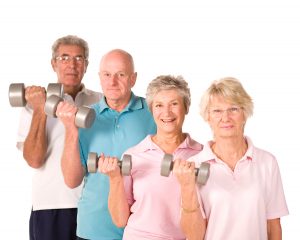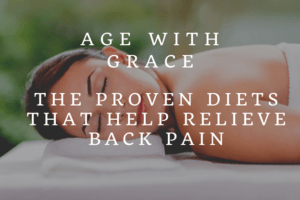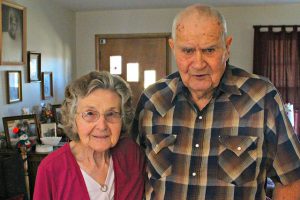5 Ways Seniors Can Make Exercising Fun
Lets be honest, exercising is not always fun. It can create discomfort, make you sweaty, and take you away from some other pleasurable pastimes or methods of relaxation. However, research clearly shows that those who are active on a regular basis have better weight management, are more relaxed, have higher energy and typically experience a better quality of life. For seniors, exercise is especially crucial since it has positive effects on memory, mood, balance, posture, strength and pretty much any issue involved in healthy aging. For those that find it difficult to start or stick with an exercise program, here are 5 ways seniors can make exercising more fun. Be sure to check with your doctor before starting any exercise regimen.
1. Find what you like to do. Do you enjoy playing golf, tennis or swimming? Have you considered taking long walks or gardening as pleasurable activities? Well if you enjoy any of the above activities, that is good news. All of these can be considered as some form of exercise. Exercise doesn’t always have to mean going to the gym. Experts tell us that we can accumulate the positive effects of exercise throughout the day by doing such activities.
2. Make it social. For people who enjoy socializing, you can incorporate exercise to add to the experience. Mall walking or group exercise programs have allowed people to interact and get in better shape in the process; just make sure you do as much exercising as you do talking.
3. Add music. Line dancing or Zumba, which are popular forms of exercising for seniors, use music to keep rhythm and add to the fun of the dance class. In these exercise classes, music helps weight management, muscle tone, balance and coordination. Whether you incorporate music during group exercise or during a long walk; music can give us energy, relax us and enhance exercise.
4. Add variety. Our minds and bodies typically love variety. Physically, variety is good for our bodies because it allows the use of different muscles, preventing wear and tear on joints. The body is also stimulated more when you do different exercises, which gives more health benefits from the activity. For our minds, variety is good for the brain. When you do different activities it can prevent you from becoming bored of the same exercises continually.
5. Attach a reward. If achieving results is important for you, attaching fitness rewards can make exercising more fun. Some examples of fitness rewards could be having a low calorie dessert if you’ve finished exercising that day, getting a pedicure, going shopping, or having a massage after exercising. Positive reinforcement encourages us to exercise while knowing that if we do it, there is something good coming at the end.
About the Author: Eric Daw is an active aging specialist and the owner of Omni Fitt. Omni Fitt is dedicated to the wellbeing, health and quality of life of people aged 65 and over. Eric motivates and empowers the older adult population to take responsibility for their independence, health, and fitness through motivating and positive coaching experiences.





